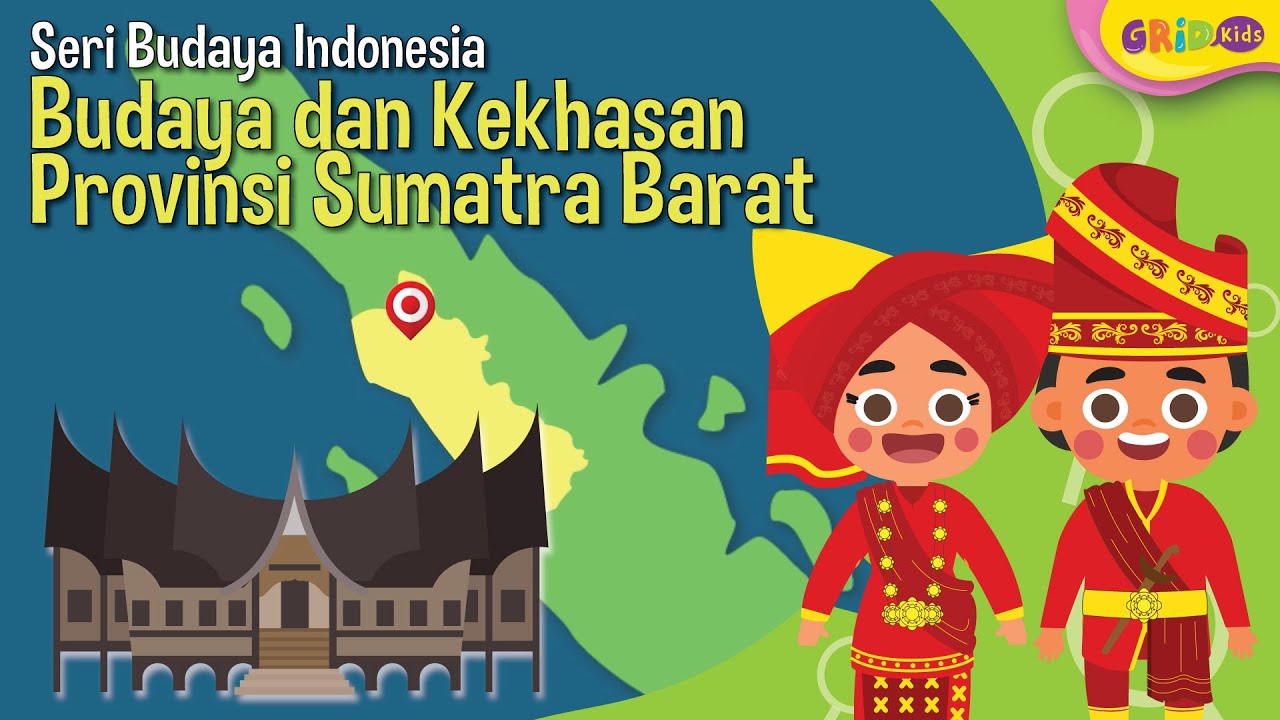ASAL USUL SUKU MINANGKABAU
Summary
TLDRThis video delves into the fascinating history and cultural origins of the Minangkabau people of West Sumatra, Indonesia. The Minangkabau, known for their distinct matrilineal society and rich culinary heritage, trace their roots to ancient migrations and folklore. The video explores various theories about their ancestry, including connections to the Austronesian peoples and the influence of Southern India. It also covers the significance of their unique customs, such as the historic 'kerbau' (buffalo) contest, and the cultural impact of their history. A compelling mix of anthropology, history, and folklore, this video offers insightful information for viewers interested in the Minangkabau culture.
Takeaways
- 😀 The Minangkabau people are known for their rich culinary heritage, particularly their Padang restaurants, which offer diverse and flavorful dishes.
- 😀 The Minangkabau are the dominant ethnic group in West Sumatra, Indonesia, with a long and rich cultural history tied to the region's coastal areas.
- 😀 The history of the Minangkabau is largely based on 'tambo,' which are oral traditions that blend historical facts with legends and local interpretations.
- 😀 There is a common belief among the Minangkabau that their ancestors came from the peak of Mount Merapi in West Sumatra, and their lineage traces back to Alexander the Great (Iskandar Zulkarnain).
- 😀 While tambo contains many mythical elements, it is considered an important cultural artifact, often blending folklore with historical facts.
- 😀 The Minangkabau people are part of the Deutro-Malay group, who migrated from southern China to Sumatra around 2,000-2,500 years ago.
- 😀 The concept of 'Rantau' (migration) is central to Minangkabau culture, serving as a means of economic and social expansion, with specific trade areas in eastern and western Sumatra.
- 😀 There is a theory suggesting that the Minangkabau may have origins in Southern India, supported by physical, cultural, and linguistic similarities with people from the Tamil Nadu region and Sri Lanka.
- 😀 Archaeological evidence, such as ancient inscriptions in Sanskrit and the Palava script, suggests strong historical ties between the Minangkabau and Southern India.
- 😀 The name 'Minangkabau' is believed to have originated from a legendary buffalo fight between the Pagaruyung Kingdom and Majapahit, symbolizing victory and the establishment of the Minangkabau identity.
Q & A
What is the primary characteristic that the Minangkabau people are known for?
-The Minangkabau people are primarily known for their rich culinary heritage, especially through Padang restaurants, which offer a variety of flavorful dishes.
Where is the Minangkabau ethnic group primarily located?
-The Minangkabau people primarily reside in the West Sumatra region of Indonesia, particularly in coastal areas.
What is the significance of 'Tambo' in Minangkabau culture?
-'Tambo' refers to the oral and written legends that document the history and origins of the Minangkabau people. However, it is acknowledged that only about two percent of the content in Tambo can be considered factual history.
What is the belief about the Minangkabau people's ancestry?
-According to traditional Tambo, the Minangkabau people believe their ancestors came from the summit of Mount Merapi in West Sumatra and are descendants of Iskandar Zulkarnain (Alexander the Great).
What is the concept of 'Rantau' in Minangkabau culture?
-In Minangkabau culture, 'Rantau' refers to areas outside their homeland where people migrate to seek livelihoods and engage in trade. These areas were historically known as Rantau nan Duo, consisting of the eastern and western coastal regions.
How does Minangkabau society view the difference between Minangkabau and Melayu (Malay)?
-In the 19th century, the Minangkabau and Melayu were distinguished based on their different cultural practices, with the Minangkabau adhering to a matrilineal system, while the Melayu generally practiced a patrilineal system.
What is the historical theory regarding the Minangkabau people's origins from Austronesia?
-Some scholars believe the Minangkabau people, along with other Southeast Asian groups, originated from the Austronesian people who migrated from southern China to Sumatra around 2000-2500 years ago.
What is the theory about the Minangkabau people originating from South India?
-Some anthropologists argue that the Minangkabau people have ties to South India, based on physical characteristics, linguistic similarities, and historical records of interactions between South India and Sumatra, including trade and migration.
What is the origin of the name 'Minangkabau'?
-The name 'Minangkabau' is believed to have originated from a historical event in which the Kingdom of Pagaruyung defeated the Majapahit Kingdom in a buffalo contest. The word 'Minang' means 'victory,' and 'Kabau' refers to 'buffalo,' commemorating this victory.
What influence did the Kingdom of Pagaruyung have on the Minangkabau region?
-The Kingdom of Pagaruyung, particularly during the reign of Adityawarman, played a significant role in shaping the Minangkabau culture and societal organization. Pagaruyung also left behind historical evidence such as inscriptions written in both Sanskrit and South Indian scripts.
Outlines

This section is available to paid users only. Please upgrade to access this part.
Upgrade NowMindmap

This section is available to paid users only. Please upgrade to access this part.
Upgrade NowKeywords

This section is available to paid users only. Please upgrade to access this part.
Upgrade NowHighlights

This section is available to paid users only. Please upgrade to access this part.
Upgrade NowTranscripts

This section is available to paid users only. Please upgrade to access this part.
Upgrade NowBrowse More Related Video
5.0 / 5 (0 votes)





